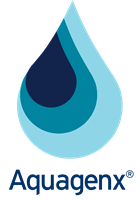 Editorial by Dr. Christine Stauber
Editorial by Dr. Christine Stauber
American Journal of Tropical Medicine and Hygiene
Excerpt:
“In this month’s issue, Brooks et al. examine the role of organoleptic perception and its association with bacteriologic drinking water quality in the Nyanza Province of western Kenya. This study focuses on two important issues relevant for drinking water in the new Sustainable Development Goals (SDGs): human sensory perception and the measures of water safety, and the need to be able to measure drinking water quality in resource limited settings. To address the lack of studies, the authors researched how household members’ perception of taste, odor, or overall quality were linked to measured levels of Escherichia coli via two detection methods: IDEXX Colilert™ Quantitray (Colilert) and the Compartment Bag Test (CBT). The authors also compared the CBT to Colilert to determine its ability to measure microbiologic water quality in the field.
This is the first study to identify an association between organoleptic perceptions of taste or odor and E. coli contamination. The study found a statistically significant association between the presence of E. coli contamination (> 1 MPN/100 mL) detected via Colilert and those who rated their water as less than excellent for taste or odor. It found similar results for taste or odor perceptions with the CBT, but these associations were not statistically significant. This is an important finding because research on organoleptic properties and bacterial contamination is limited, even more so in developing countries.
… As nations move to adopt and implement the SDGs, the need for scalable and efficient ways to monitor drinking water quality will be tremendous. The CBT is a potentially scalable method, as highlighted in a national demographic and health survey in Peru.“
Call Us
1+919-590-0343
Copyright ©2017 Aquagenx, LLC
All Rights Reserved
